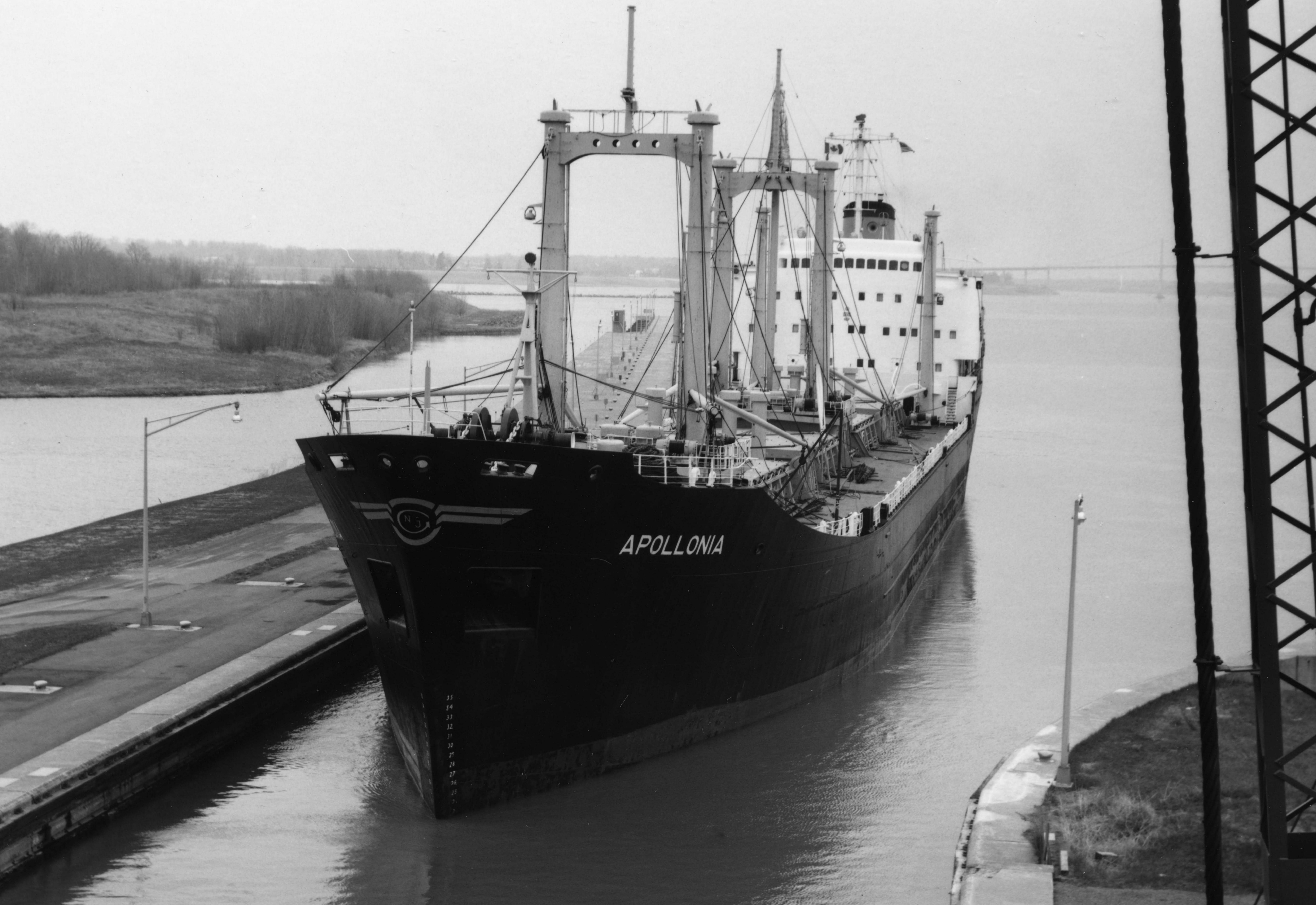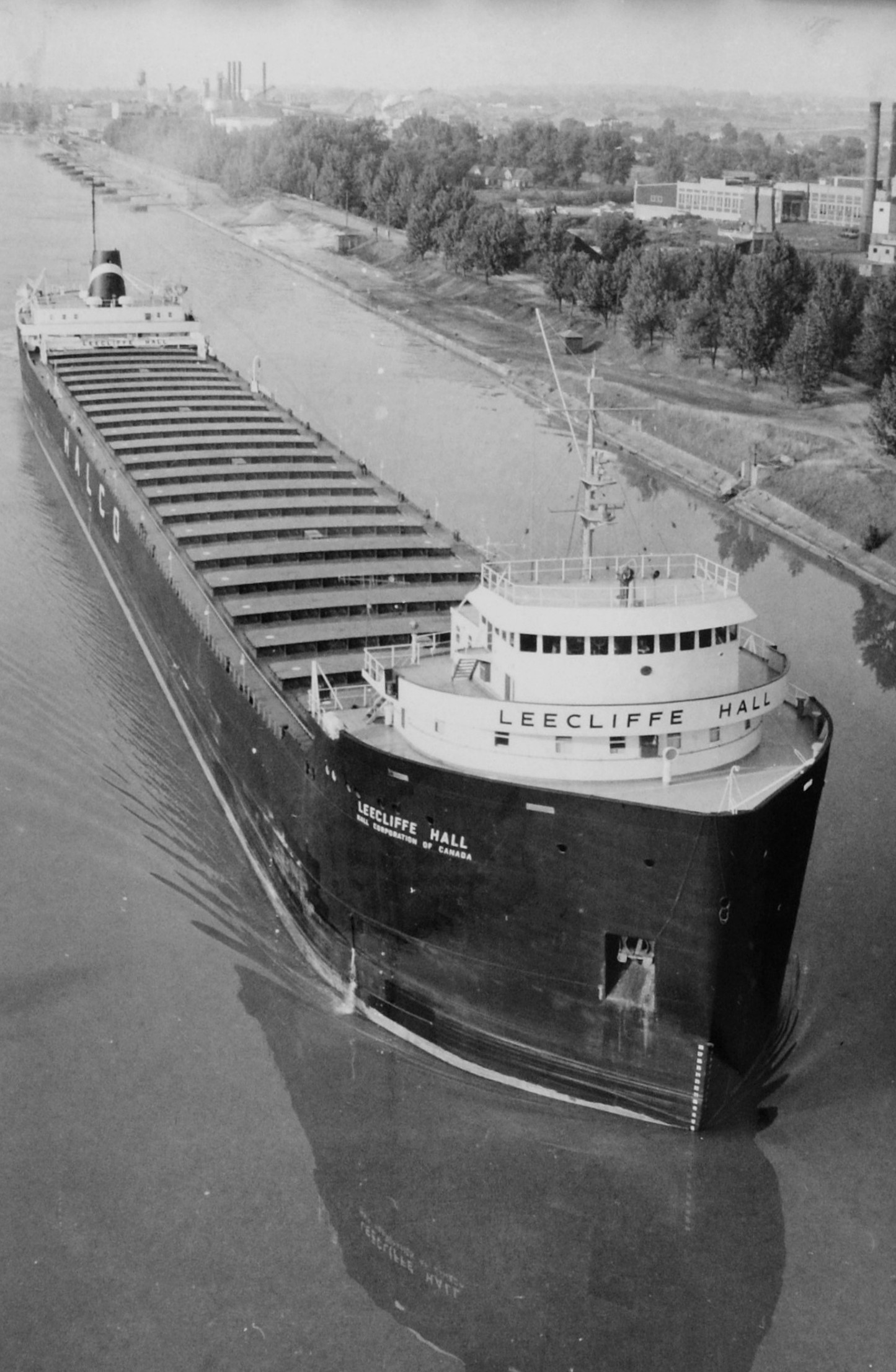Shipwreck: LEECLIFFE HALL Sank 50 Years Ago
Skip Gillham Vineland, Ontario, Canada
 Welland-JK[1].jpg)
Leecliffe Hall – Welland Canal – color – Jim Kidd
The three year old Canadian bulk carrier LEECLIFFE HALL was lost a half-century ago. It went down in the St. Lawrence River, about 65 miles east of Quebec City, on September 5, 1964. The inbound freighter had loaded a cargo of iron ore at Sept-Iles, Quebec, and was bound for Lackawanna, New York, when it was struck at #1 hold by the Greek vessel APOLLONIA. Foggy conditions prevailed at the time.

Apollonia – Snell Lock – 1969 – Daniel C. McCormick photo
With the opening of the St. Lawrence Seaway on April 25, 1959, the nature of Great Lakes shipping changed. Larger ships could now enter and exit the inland seas and new additions to the Canadian fleet were regular occurrences.
While most of this new tonnage was built in Canada, the LEECLIFFE HALL was one of the exceptions. It was constructed by Fairfield Shipbuilding and Engineering Ltd. and launched at Port Glasgow, Scotland, on May 18, 1961. To that date, the 730 foot long carrier was the largest dry cargo ship built in the United Kingdom.
The $5 million LEECLIFFE HALL sailed for Canada under its own power and arrived at Quebec City on August 23, 1961. After some hull strengthening, added for the transatlantic journey, was removed, the ship was commissioned at Montreal on September 22 and set sail on its maiden voyage for the Hall Corporation of Canada three days later.
LEECLIFFE HALL brought a record cargo of 1,030,979 bushels of mixed grain to Quebec City on its first trip and soon settled into regular service carrying iron ore to steel company docks around the Great Lakes. Eastbound, the holds were filled with various grains, much for overseas export, for the run down the lakes and back to the St. Lawrence.
This routine carried on for the rest of the 1961 season, all of 1962-1963 and up until the time of its loss fifty years ago. It had been a profitable investment for the Hall fleet. The owner, celebrating his 40th birthday the previous day, and his family were on board, with guests, for a pleasure cruise at the time of the accident.
After the two ships collided, there was a desperate effort to beach the badly wounded LEECLIFFE HALL near St-Joseph-de-la-Rive, Quebec. Passengers and crew took to the lifeboats and the tug Foundation Vibert arrived at the scene to take LEECLIFFE HALL in tow in an effort to reach safety. The vessel had remained afloat for four hours so three sailors decided to return to the ship to pick up some personal belongings. They were lost when LEECLIFFE HALL suddenly sank about seven miles from the crash site. Those in the lifeboats were picked up by a passing yacht, plus two small river freighters and taken to shore.
Salvage was considered, but the extent of the damage was significant. It was decided to dynamite the hull to clear the area of a hazard to navigation and this was carried out in the summer of 1966.
An inquiry found both Masters and Pilots on board at fault for going too fast for the conditions and being off course. All had their certificates suspended for a period of months.
Like LEECLIFFE HALL, APOLLONIA, the Greek freighter had been built overseas in 1961. It was constructed at Aioi, Japan, and was headed to the Atlantic at the time of the collision. Despite massive bow damage APOLLONIA remained afloat. The ship was repaired at Levis, Quebec, and returned to service. It continued in saltwater trading until being scrapped at Shanghai, China, under a third name of Mayfair in 1985.

Leecliffe Hall (overhead view) in the Welland Canal by Robert Walton
Back to top
